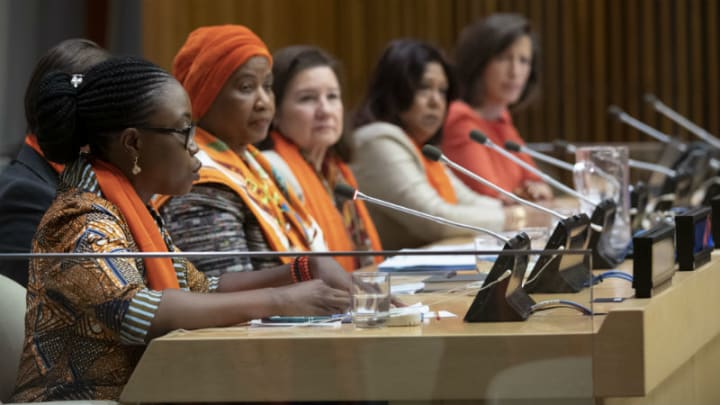What is gender equality and how can we achieve it? This page provides an introduction to this global issue and education materials for teachers and students.

The above map shows the degree of gender inequality around the world. The darker the color, the higher the level of gender inequality in the country, which means those countries need more efforts to achieve gender equality. In those regions, there is a bigger gap in gender equality between men and women, and women are not provided with the equal rights and opportunities as men. As a result, many women face various types of discrimination.
| Traditions and customs oppress women’s freedom
In regions with an Islamic population, “honor killings” are common. Most victims are women and face harsh conditions such as live burial, stoning, and execution. The the reasons for killing are simple reasons such as losing chastity and being with a man. The fact is that even the perpetrators are not properly punished.

| What is Gender Equality?
Gender equality refers to equal treatment without discrimination based on gender in all areas of life. In order to achieve this, it is necessary to resolve inequality, which is characterized by differences in the status and authority of men and women in society. Through this process, gender equality can be guaranteed by eliminating discrimination against women and strengthening women’s empowerment.

| Current Status of Gender Inequality
Most of the victims of horrific child abuse worldwide are women. Even circumcision, which cuts off and mutilates parts of the genitals, also targets women. Women are frequently exposed to physical and sexual violence, and the time they spend on unpaid work is three times more than men.
Waris Dirie is a human rights activist and the first person to publicize to the world and raise awareness about the violence of FGM. She has contributed greatly to passing a resolution to ban its practice and is leading efforts to help to heal FGM victims.

Click to find out more about Waris Dirie, Sunhak Peace Prize Laureate:
Laureates – LAUREATES – Sunhak Peace Prize
| What Causes this Inequality? : Factors hindering gender equality
Patriarchal traditions and customs are one of the obstacles to gender equality. As a result, inequality is occurring in educational opportunities and employment. It is also estimated that more than one billion women worldwide are exposed to physical and sexual violence at home but without legal protection. There are even problems of unwanted pregnancy and childbirth due to lack of sex education on contraception and poor medical services.

During the COVID-19 pandemic period, global lockdown measures took place. As a result, consumption and production levels declined, which also threatened women’s jobs. Even social distancing have caused many women to suffer from domestic violence. The international community and governments would need to pay special attention to COVID-19 recovery plans targeting women and girls.
| To Break the Glass Ceiling and Ensure Gender Equality
It is paramount to strengthen women’s rights education and eliminate patriarchal traditions and practices. We must also ensure that women have equaly accces to education so that they can complete their education and participate in economic activities. Also, to achieve equality, we need to abolish laws and systems that impede gender equality to ensure the status and rights of women.

In addition, the international community is making various efforts for gender equality. You can find more information on our website, including a teacher’s guide and student worksheets!
“Achieving Gender Equality” is part of the Sunhak Peace Prize’s “Learn & Act,” an educational program designed to introduce diverse approaches to global peace issues.
Teachers can use the Teacher’s Guide and Student Worksheets to give a lesson on each issue and lead discussions.

Visit our Sunhak Peace Prize website for educational materials on peace related topics.















